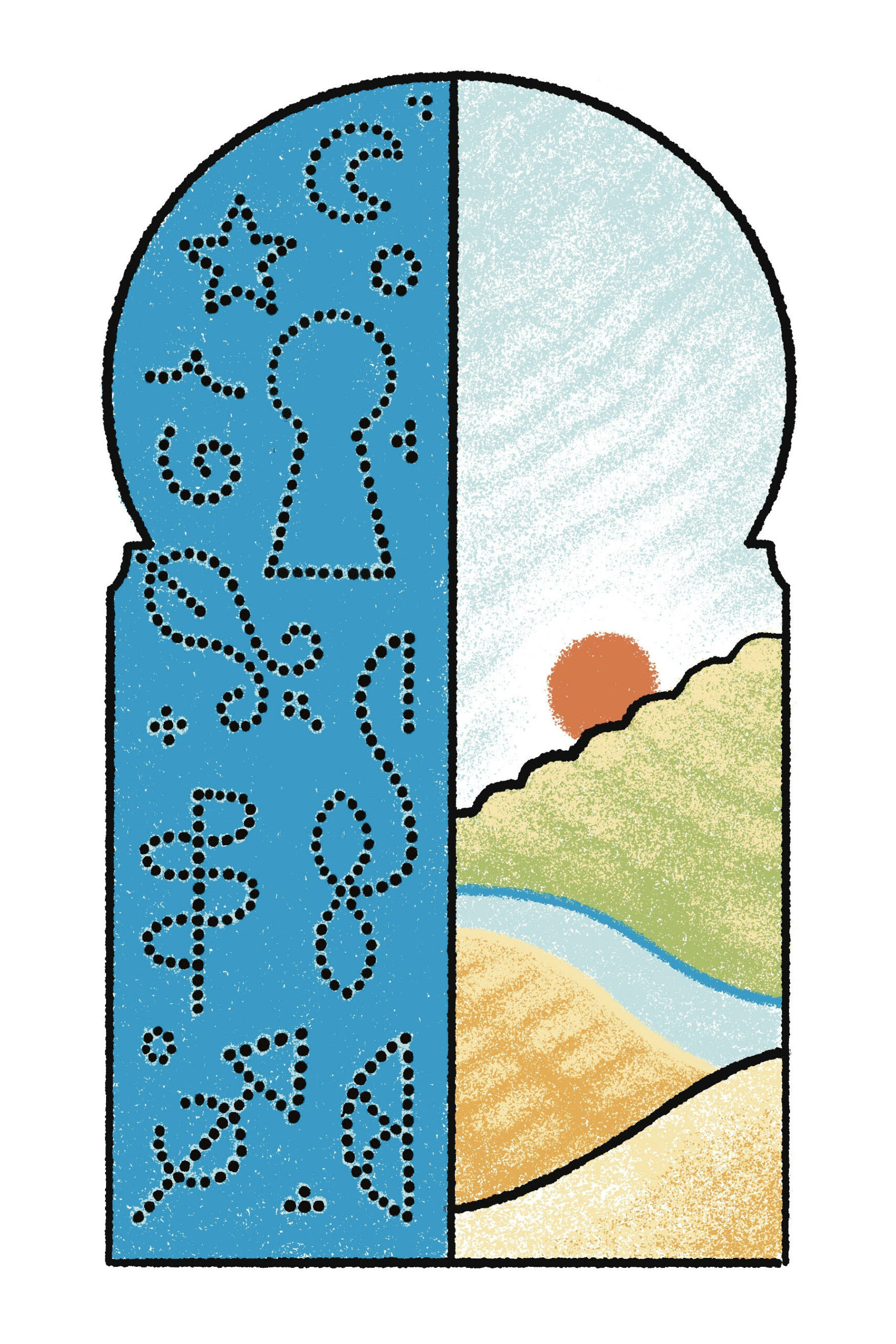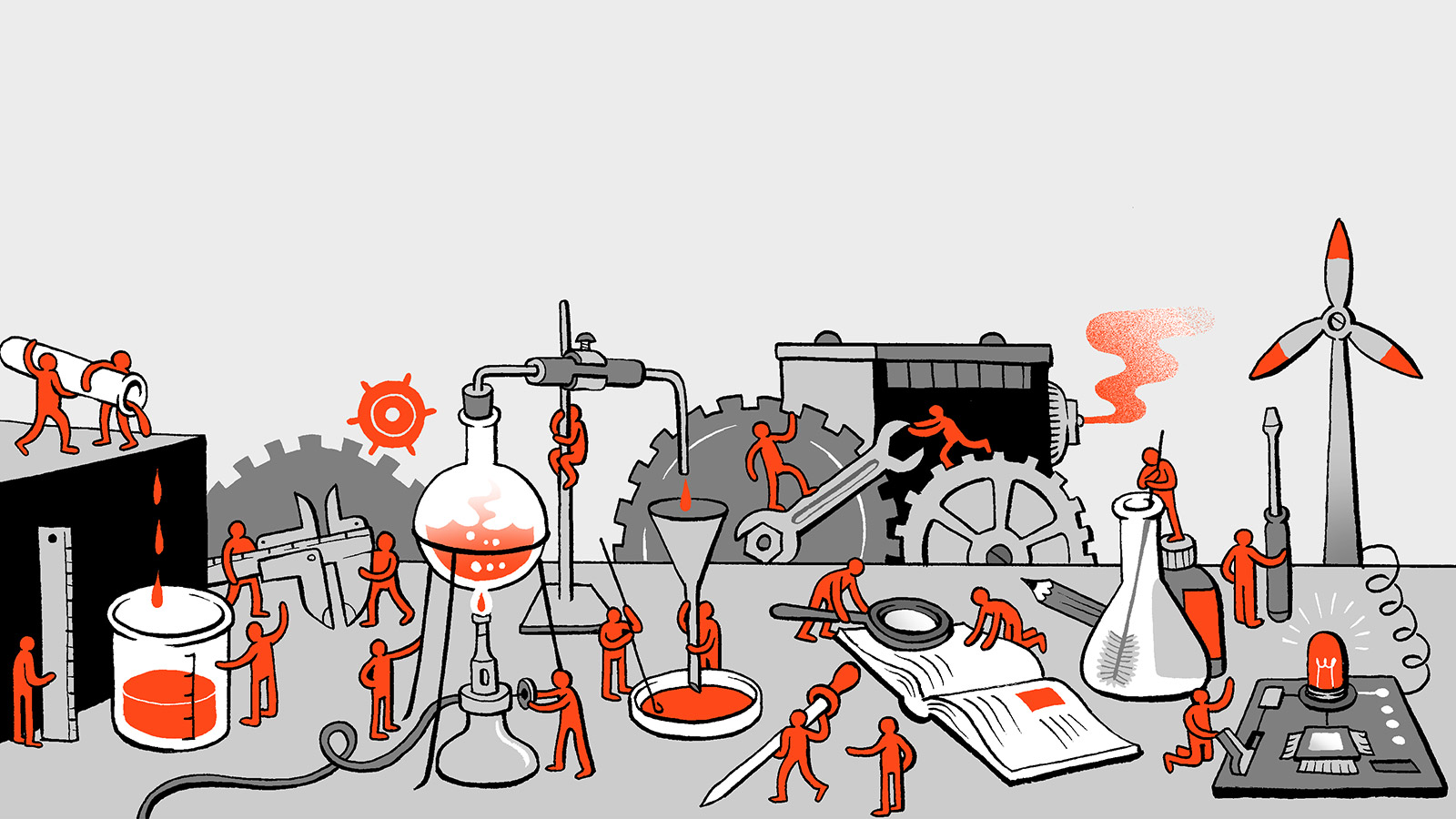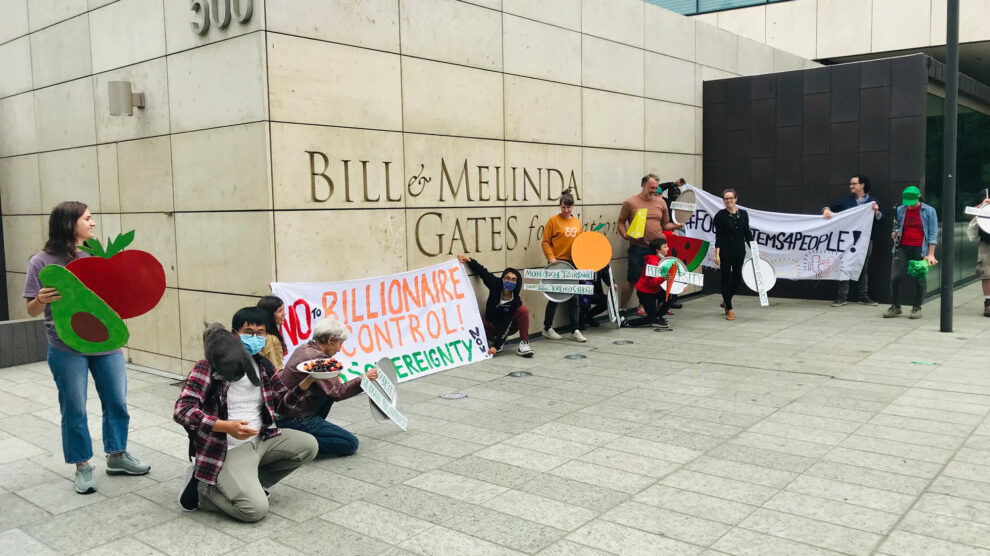National Liberation and Sovereign Technology
The Contribution of Slaheddine el-Amami
By Max Ajl
Volume 25, no. 1, The Soil and the Worker
اقرأ ترجمة عربية لهذا المقال

“For a colonized people the most essential value, because the most concrete, is first and foremost the land: the land which will bring them bread and, above all, dignity.”
—Frantz Fanon, The Wretched of the Earth
From the Chinese Revolution to the Algerian War of Independence, people engaged in struggles for decolonization, liberation, and sovereignty have fought to reclaim their land and have been willing to do anything to get it. Frantz Fanon explored the roles that land, non-human nature, agriculture, and people living in the countryside play in social change, conflict, development, liberation, revolution and reaction. Marxist thought and social science have crystallized these issues into several “questions,” as this broad sweep of concerns moved through a series of steps towards the world-churning struggles for decolonization and national liberation. The “classical” ones—and what is classical is, of course, fraught with power dynamics—were the following. First, the question of politics: How would European radicals relate to large peasant populations in their countries? Second, the questions of labor and society: How would capitalism’s growth in the countryside impact the future of the peasant class? Was it fated to vanish? Or would it endure? Then, with the victory of the Bolshevik Revolution, a third question emerged: What was the role of the countryside in national economic development, specifically as it related to capital accumulation towards industrialization?1
This was a European canon. Although Vladimir Lenin posed the problem of imperialism with electric verve and supported the national struggles of the colonized and dominated world, it remained for the victims of imperialism to reassess the agents of agrarian social transformation and rework the agrarian questions to reflect the needs of the periphery: the poorer parts of the world, which make up the majority of humanity. A line of revolutionary thought from Mao Zedong to Frantz Fanon to Amílcar Cabral brought to the fore the oppression of the majority by the minority. They “diagnosed” the periphery as “suffering” from semi-colonialism and neocolonialism. They elevated the peasant and rural-dweller to being the core subject of social revolution, in practice and then in theory. These shifts gave rise to an entirely new set of agrarian questions. Their answer was national liberation.2
National liberation was not nationalism. It was not identical to state sovereignty, nor simply to a national flag and a seat at the United Nations. Neither was it the same as the world-breaking-and-making project of decolonization. Rather, liberation was a response to imperialism’s control over the national productive forces of subjugated nations, and to how imperial forces had wrested control of history, or the self-directed control of productive forces, from a people. Within African societies, as Amílcar Cabral saw, this was first of all about land.3 Liberation also concerned what was grown on the land: the West African economies had devoted themselves to monocrop groundnut export, with ruinous effects on soil fertility.4
China, Science, and National Liberation
In China, national liberation and postcolonial planning set the stage for rethinking the agrarian question. The Revolution linked the agrarian question to sovereign industrialization, in an experience yet to be surpassed in historical attempts to break from imperial oppression. From gathering night-soil and animal waste to produce organic fertilizer to the restoration of traditional hydraulics systems based on earth and stone, China linked the breaking of scientific dependency with a form of agroecology (before the term existed) within a national liberation framework.5 The gravitational pull of China on peripheral thought was unthinkably massive, like that of a mountain or the moon. Individuals and groups in the Arab World, from economists and agronomists to members of the Arab left and communist parties with complex relationships to Arab nationalism, all were beguiled by China’s example. They paid extremely close attention to its capacity to internalize knowledge and technology and to familiarize its population with “modern” technology, including how to repair it. In the rural sector, many students and planners took China’s decentralized approach to the diffusion and accumulation of knowledge seriously.
In Tunisia, China’s experience of labor mobilization and agrarian reform inspired a coterie of young researchers associated with the radical student group Perspectives, including the economist Yves Younes (1937–1996) and the agronomists Gilbert Naccache (1939–2020) and Slaheddine el-Amami (1936–1986). Naccache was eventually imprisoned and Younes was forced to flee the country, but Amami escaped the neocolonial dictatorship’s dragnet. By 1977, he became the head of the Centre de Recherche en Genie Rural, the main research base within the Tunisian Ministry of Agriculture for heterodox planning approaches, especially when it came to irrigation technology—an axial concern in a country where ingenious techniques for water mobilization had been central to farming for millennia.
Amami was a polymath.6 He effortlessly moved through agronomic arenas, spiraling outwards from agronomy into planning. Amami believed that Tunisia’s rural poverty and underdevelopment were linked to its scientific dependency on foreign nations. But he worked for the state, a harsh US-aligned dictatorship whose allotted space for Marxist thought morphed, swelled, and shrank over time, so he was limited in his ability to express these opinions. Sometimes, they were permitted at the margins of universities and research institutions, especially in the 1980s, so long as they did not directly call for dispossessing and deposing national wealth and power. Constricted from calling outright for a land-to-the-peasant agrarian reform or wide-scale and comprehensive cooperativization as in China, Amami instead focused on technological innovation. He wanted to shatter Tunisia’s technological dependence.
Amami’s Contributions to National Liberation in Tunisia
Amami made three critical analytical–conceptual innovations. He rejected the neocolonial notion of tradition as a burden and instead considered peasant tradition to be the organic base of popular development. He further dismissed that of imported technologies as superior or as a boundless boon to Tunisia. He scrutinized them, showing that not only were they not socially neutral, they had been implanted to further the ends of neocolonial value extraction and exploitation. His third innovation was to sketch a program for sovereign economic development alongside sovereign control of technological development, a form of people’s science based on a supple appreciation of the wonders that modern scientific experimentation, research, and development could bring to Tunisia. Amami wove together these three threads of neo-populist thinking, placing the small peasantry at the center of his developmental plans without directly attacking landed power.
Let us consider each of these threads in turn. First, the notion of tradition. Tradition refers to agricultural knowledge built up over millennia through farmer-based experiments and learning, against the background of a relatively unchanging natural environment and amidst the flows of technology and thought eastwards from Iran and Yemen and westwards from Andalusia. Tradition had nothing to do with ossification or so-called “backwardness” except by the imputations of colonial and neo-colonial powers. It was simply a catch-all term that he had to engage in order to be able to seriously discuss the suite of technologies and practices to which the term referred. He knew that Tunisia, as with all countries, had a specific technological heritage, adapted to time, place, moisture, winds, humidity, rainfall, and soil. Writing with colleagues Akissa Bahri and J. P. Gachet, he said he considered peasants to be “the one national library … conserving techniques and knowledge” of the golden age of Maghrebi agronomy.7 Amami’s most concise statement appeared in an essay initially published under the aegis of the Association pour le Développement et l’Animation Rurale, a rural development organization, and later published in a book as part of an informal “think tank” weaving together economists and engineers towards rethinking development, assembled by the University of Tunis’s first Marxist full professor, Azzam Mahjoub.8 In the 1982 paper, Amami argued that the ideology of “modernization” coupled with derision for the “traditional” was in fact the intellectual expression of the agenda of capitalism, colonialism, and imperialism, producing “unequal development,” a phrasing which he must have taken from Samir Amin.9
Amami understood that technologies developed elsewhere and imposed upon Tunisia by the North were not socially neutral in their effects, not as capable of healing as of harm.
The notion of “traditional,” he wrote, had become “a colonial ideology favoring the supremacy of imported technology and wanting to disown any specificity of/to the colonized country.” Amami argued that the reliance on these technologies would push Tunisia to simply retread Northern development paths, towards urbanization, industrialization, the development of a middle class, and supposedly widespread prosperity. In every sector they entered, these dependency-inducing technologies dissolved and disarticulated national production and wove it into neocolonial developmental ambitions. Research was the keystone of this dependency, forging a “gigantic technological relay between the exterior and the interior,” extending to the Green Revolution which imposed dependence on foreign seeds. Even more damaging was the import of hydraulic techniques and technologies, which took up an even larger portion of the state agronomic research budget, making Tunisia “dependent on its inputs and means of production without being able to acquire its food independence.” This “double agricultural dependence, downstream and upstream,” Amami wrote, “is the most alienating of the relationship of unequal development between the affluent countries and the underdeveloped countries.”
The neocolonial ideology and planning perspective had a sociocultural cognate: instilling a spirit of scientific dependence within the minds of Tunisian people, a molecular remolding beginning in elementary schools. The rural exodus, the depreciation of rural life, the number of “‘failed’ students” from the countryside, the mechanization of hillside and fragile terrain farming in the Center and South of Tunisia, the lack of skilled labor in the olive sector—these were not forces of nature like gravity but the harvest of human decisions. Above all, this manifested in how schooling “dangled the mirage of an urban life, getting rid of centuries of prejudice and ‘downgrading’ in which the rural world bathed.”10 Amami understood that technologies developed elsewhere and imposed upon Tunisia by the North were not socially neutral in their effects, not as capable of healing as of harm. They were mechanisms to perpetuate the stagnation of Tunisian economic and technological development, precisely because their imposition reflected the interests of their makers. They were foisted upon Tunisia.
Appropriate Technologies and Eco-Development
In contrast, Amami called for an entirely different development. It quietly reflected the “basic needs” approach to development then dominant in international consortia. But it was radicalized, to be implemented as part of national planning. He called for “Dispersed housing, decentralized hydraulic infrastructure (wells) … adapted to the mobilization and the exploitation of renewable energy,” further arguing that these measures would be “creators of employment.” Alongside rationalizing soil use through land use planning, Tunisia could double the number of people employed.11 This, in turn, rested on a foundation of the “total Tunisification of research,” alongside its “regionalization”: appropriate technology meant appropriate to an ecology, a biome, a soil structure.
Amami’s primary expertise was in water harvesting, and accordingly the largest breadth of his writing concerned the ensemble of water accumulation technologies incubated in Tunisia over the millennia.12 These installations, from hillside reservoirs, to the meskats of the Sahel, the jessour of semi-arid montane zones, were based on intensive initial investments of labor, deploying entirely local materials, and depending totally on local knowledge of the contours of rainfall and rates of runoff.13 By using a seasonally abundant input—i.e., labor—and deploying it along with decentralized knowledge and physically abundant earth and stone, this “tradition” was uniquely appropriate for a country in which availability of water for irrigation decreased from North to South. Amami saw that such technologies—still in use to grow almond trees and pomegranates in semiarid zones in southern Tunisia—could be the technological keystone of national development planning and national liberation in the Third World more broadly, towards integrated and autonomous technological and social development.
Critically, Amami’s heterodoxy was neither reactionary nor a call for stasis, but radical and an advancement of people’s science. He called for the use of solar energy for drip irrigation, for example, which would achieve an appropriate level precisely because “when the solar energy increases the quantity of water distributed naturally increases to satisfy the hydrological needs of the plants.”14 In another research note, he praised the “dispersed and decentralized” character of solar energy as uniquely suitable for wells. The natural dispersion “of these energies,” he wrote, imposed “a revision in the concept of rural planning.”15 This was in turn based on his conception of peasants as more than capable of “technological assimilation,” conditioned on “an amelioration of the material conditions and an alleviation of the hardship of work”: a technology appropriate for making people’s lives better in the here and now.
Finally, Amami called for such projects in the context of national metallurgy industries. Indeed, solar and wind power was viewed as a component of national industrialization. These “workshops for repairing the wind turbines” alongside ever-higher rates of “integration would permit in the long run … the creation of a non-technologically dependent national industry.”16
Sovereignty and Peasant Power
Such an appreciation of Tunisia’s historical endowments took shape against the structure of oppression bearing down on Tunisia, state planning, and the rural poor. Amami’s work sought to do, using appropriate techniques, what Tunisia and most of the South had not been able to do using inappropriate technology: to develop. Amami saw that such a process had to be based on the ingenuity and capacity of the poorest and most oppressed direct producers of the nation, and with the state reworked into a scaffolding for decentralized and self-reliant rural development. In this, China loomed as the model, horizon, and dream. Amami also saw that any such development had to be based on delinking from the logic of the international technological system. In this way, more than almost any other postcolonial theorist of development, he perceived that technological sovereignty and national liberation were intertwined, and fundamental to the resolution of the agrarian question in its social, economic, political, ecological, and national aspects.17
Such lessons are not only of the past. They remain the central components of an untrod peasant path to development and liberation, largely untried, spurned, and yet the only one which leads away from the catastrophe of the present. Land, peace, and bread were the historic banners of revolution over a century ago. Amidst catastrophic shocks to the world food system and calamitously unequal agrarian structures, the slogan has not aged, either for the antisystemic movements of today or for the revolutions of tomorrow.
Notes
- A. Haroon Akram-Lodhi and Cristóbal Kay, “Surveying the Agrarian Question (Part 2): Current Debates and Beyond,” The Journal of Peasant Studies 37, no. 2 (2010): 255–84, https://doi.org/10.1080/03066151003594906.
- Sam Moyo, Praveen Jha, and Paris Yeros, “The Classical Agrarian Question: Myth, Reality and Relevance Today,” Agrarian South: Journal of Political Economy 2, no. 1 (2013): 93–119, https://doi.org/10.1177/2277976013477224.
- Amílcar Cabral, Unity and Struggle: Speeches and Writings of Amilcar Cabral (Monthly Review Press, 1979).
- Amílcar Cabral, “Para o Conhecimento Do Problema Da Erosão Do Solo Na Guiné,” Boletim Cultural Da Guiné Portuguesa, 1954; Amílcar Lopes Cabral, “Feux de brousse et jachéres dans le cycle cultural arachide-mils,” Boletim Cultural da Guiné Portuguesa 13, no. 51 (July 1958): 257–68, https://www.repository.utl.pt/handle/10400.5/9175.
- Sartaj Aziz, Rural Development: Learning from China (Macmillan International Higher Education, 1978); Sigrid Schmalzer, Red Revolution, Green Revolution: Scientific Farming in Socialist China (University of Chicago Press, 2016).
- See Max Ajl, “Auto-Centered Development and Indigenous Technics: Slaheddine El-Amami and Tunisian Delinking,” Journal of Peasant Studies 46, no. 6 (2019): 1240–63, https://doi.org/10.1080/03066150.2018.1468320.
- Slaheddine El-Amami, J.-P. Gachet, and Taher Gallali, “Choix Techniques et Agriculture Maghrébine: Le Cas de La Tunisie,” Peuples méditerranéen 8 (1979): 119–52.
- Author interview with Azzam Mahjoub, Tunis, November 8, 2019.
- Slaheddine El-Amami, “Pour Une Recherche Agronomique Au Service d’une Technologie Nationale Intégrée,” in Tunisie: Quelles Technologies ? Quel Développement ? (Éditions Salammbô: GREDET, 1982), 15–20.
- Slaheddine El-Amami, “Technologie et Emploi dans l’Agriculture,” in Tunisie, Quelles Technologies ? Quel Developpement, GREDET (Tunis: Éditions Salammbô, 1983), 21–38.
- El-Amami, “Technologie et Emploi dans l’Agriculture,” 25.
- “Slaheddine El-Amami,” Al-Mūsūʿa al-Tūnisīyya, accessed April 20, 2022, http://www.mawsouaa.tn/wiki/%D8%B5%D9%84%D8%A7%D8%AD_%D8%A7%D9%84%D8%AF%D9%8A%D9%86_%D8%A7%D9%84%D8%B9%D9%85%D8%A7%D9%85%D9%8A.
- Slaheddine El-Amami, “Changing Concepts of Water Management in Tunisia,” Impact of Science on Society 33, no. 1 (1983): 57–64.
- Slaheddine El-Amami, “Les Perspectives d’Utilisation de l’Energie Solaire Dans Le Domaine Agricole En Tunisie,” Bulletin d’Information de l’INRAT 9 (March 1978): 10–14.
- Slaheddine El-Amami, “Elements Pour Un Plan d’Application de l’Energie Solaire Dans Le Domaine Agricole (VIeme Plan 1981–85),” Documentation (Tunis: CRGR).
- El-Amami, “Elements.”
- In the documents I have so far examined of Amami’s, he did not deal with gender contradictions in the Tunisian countryside.





